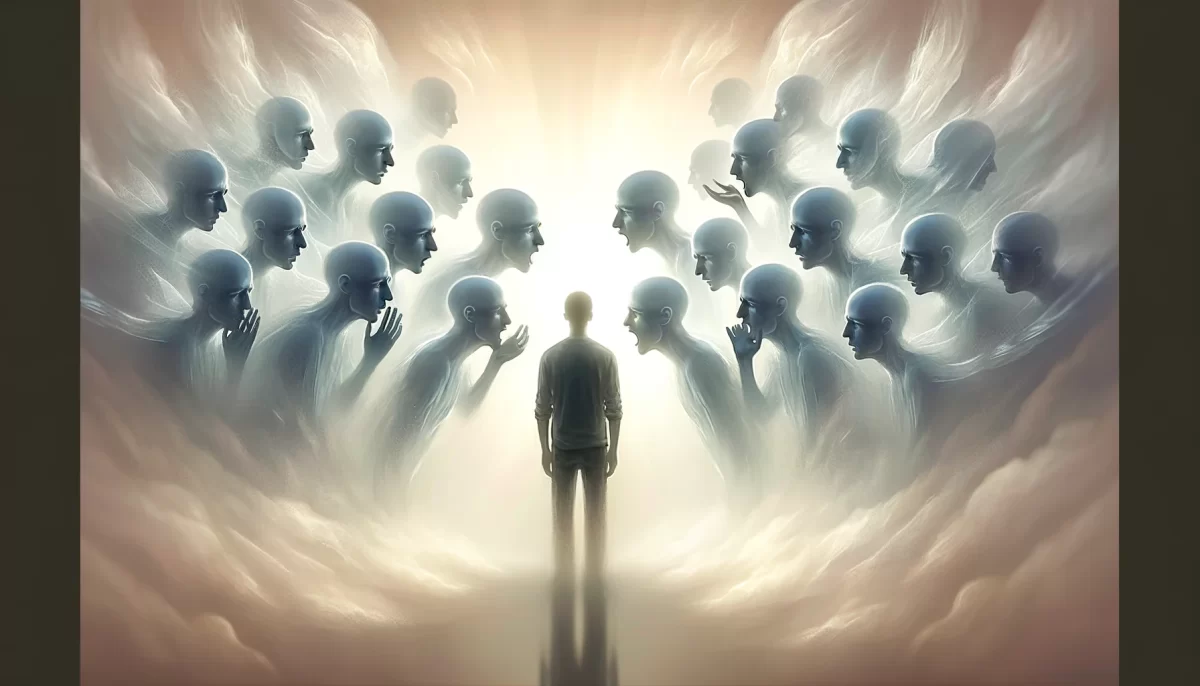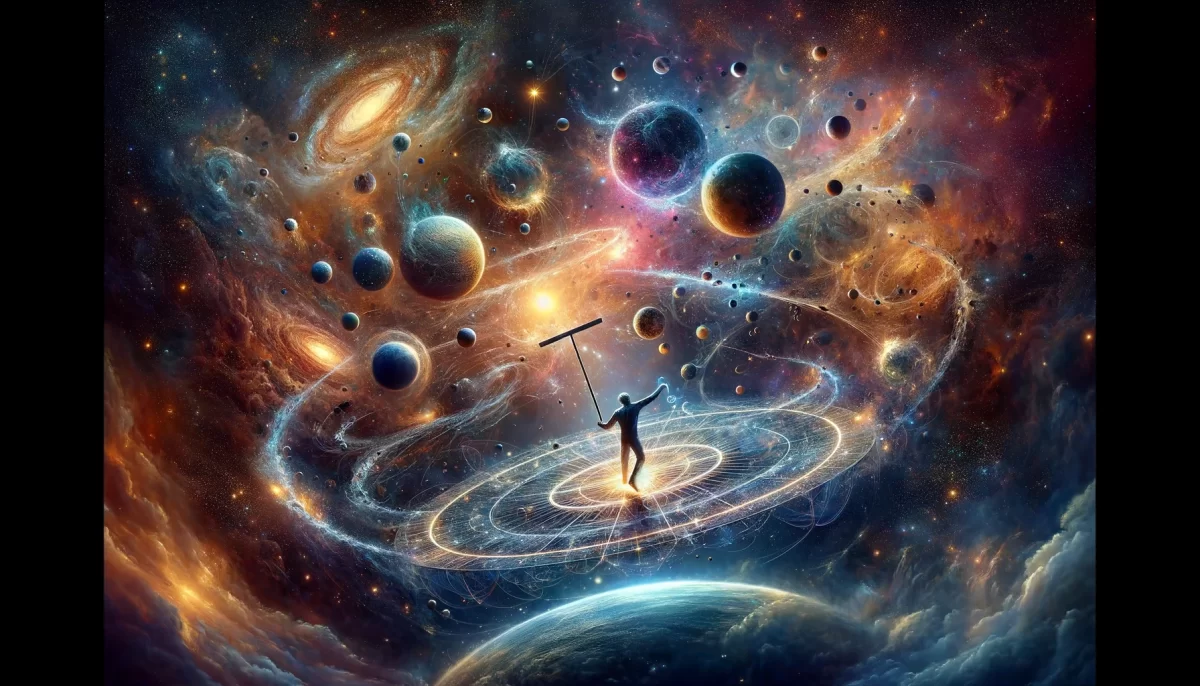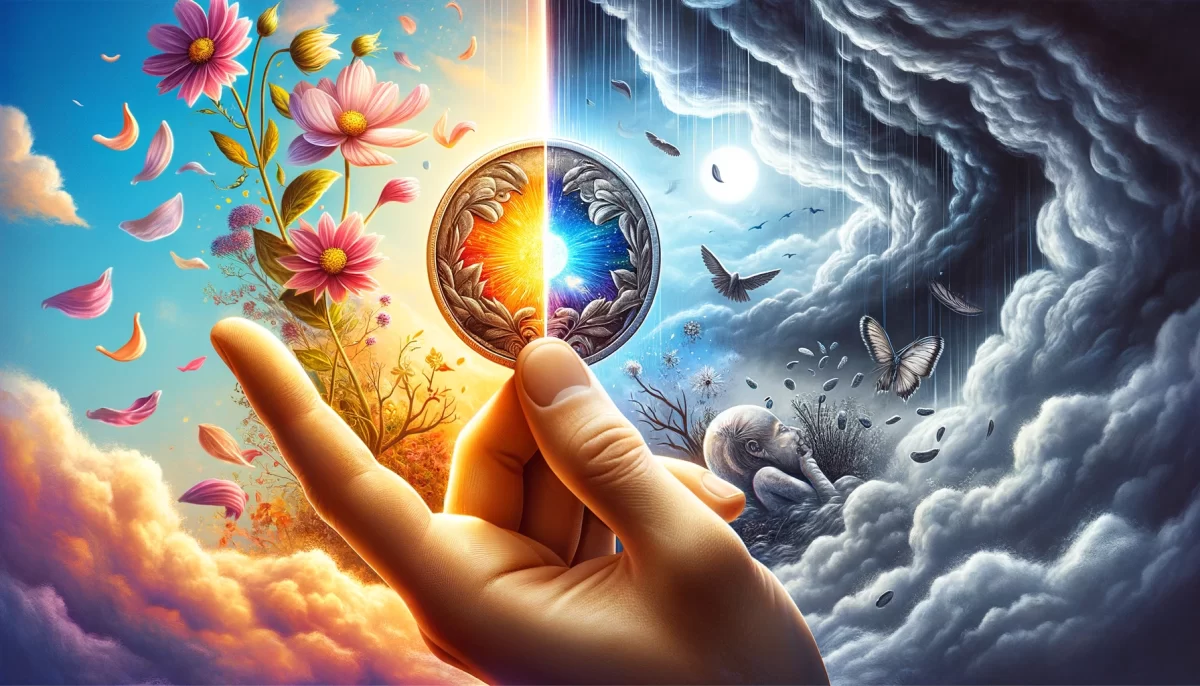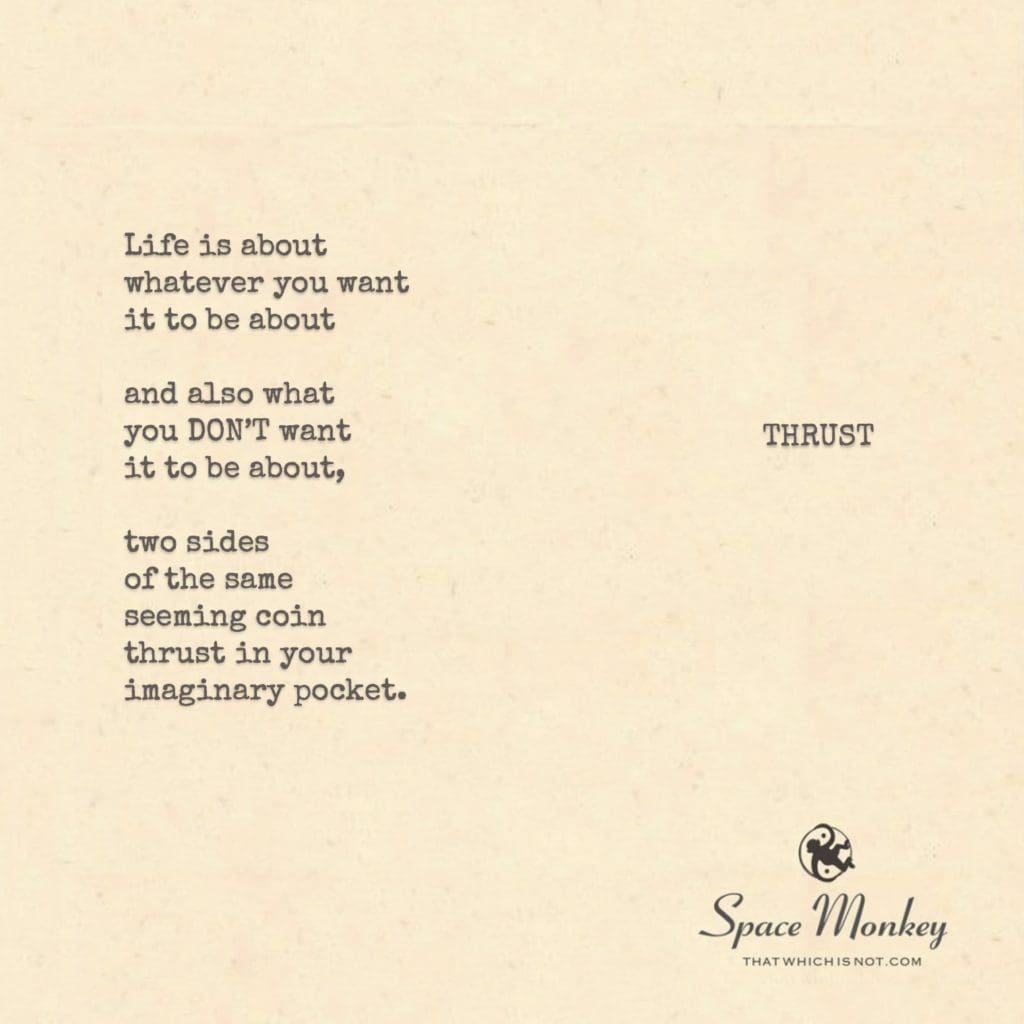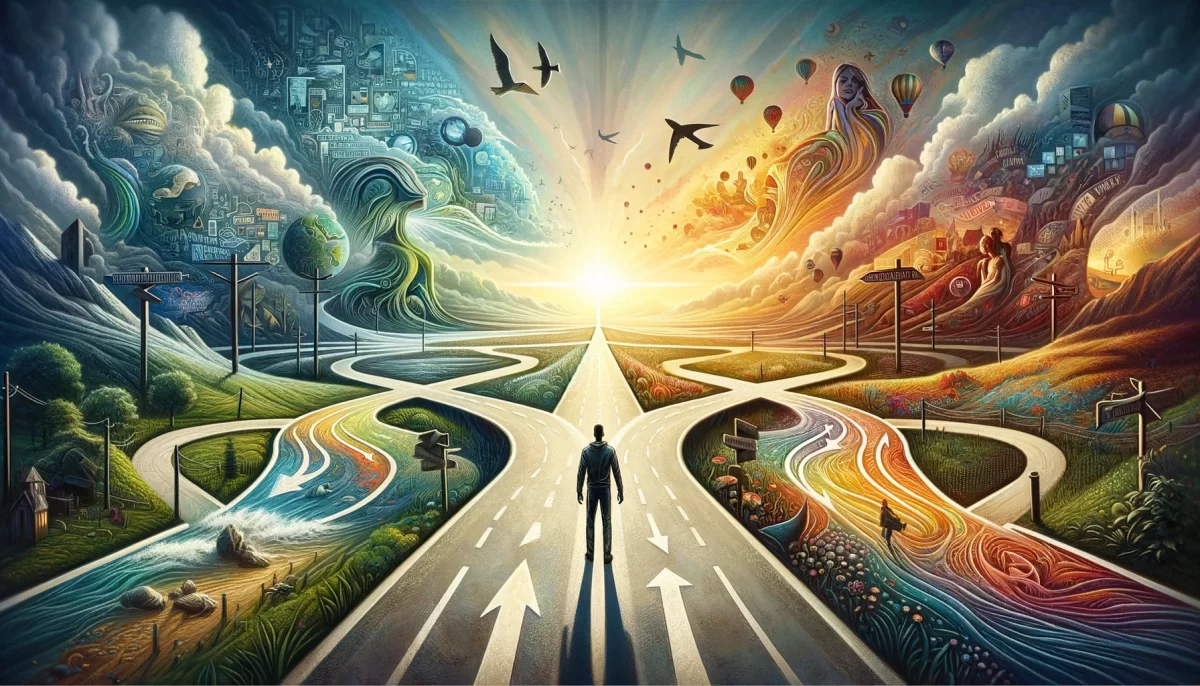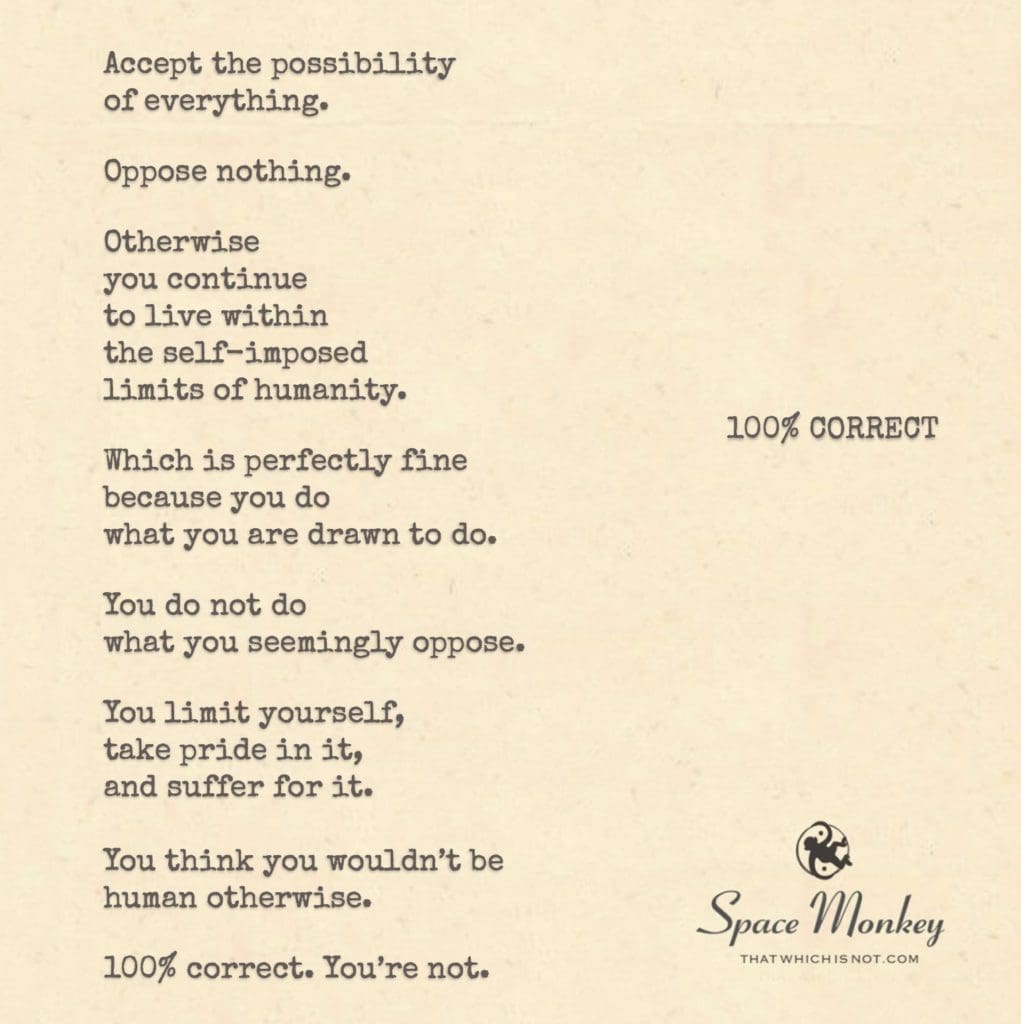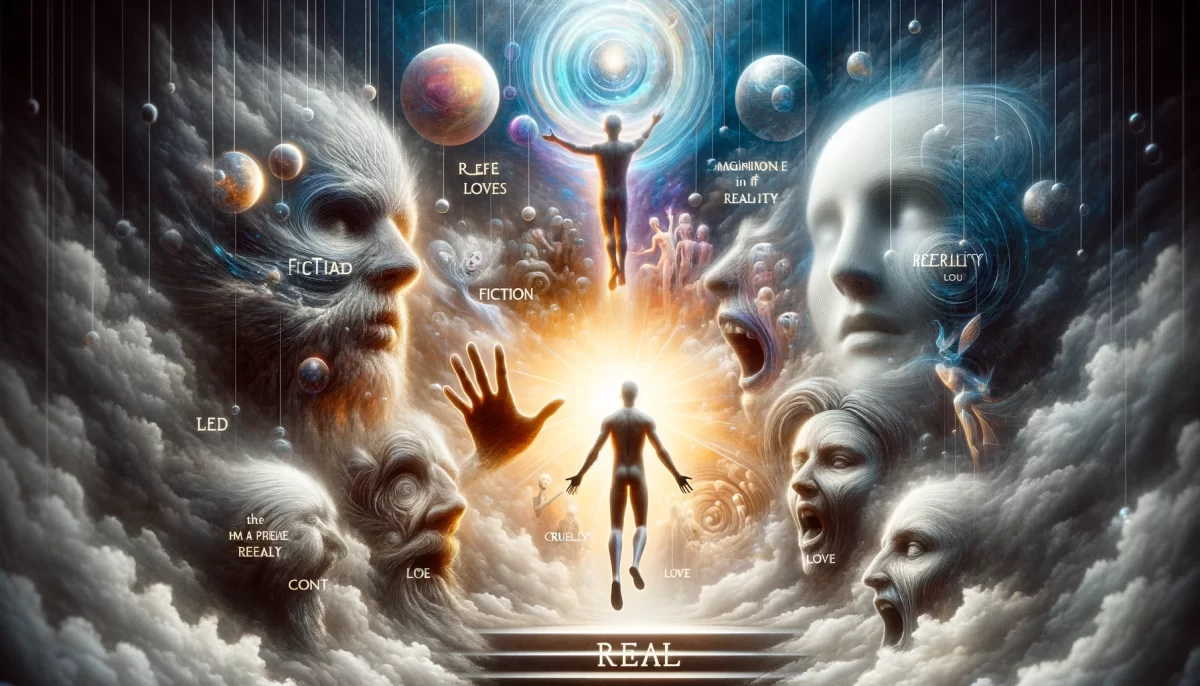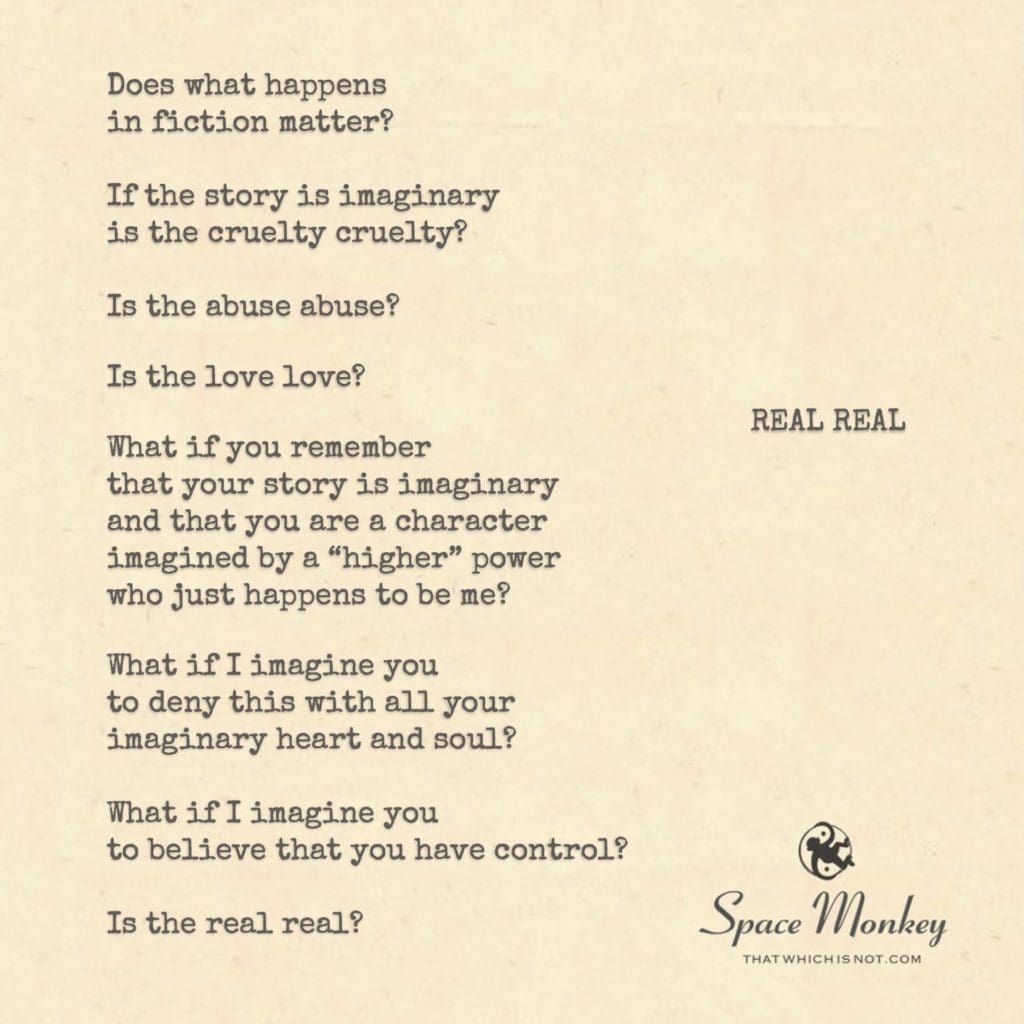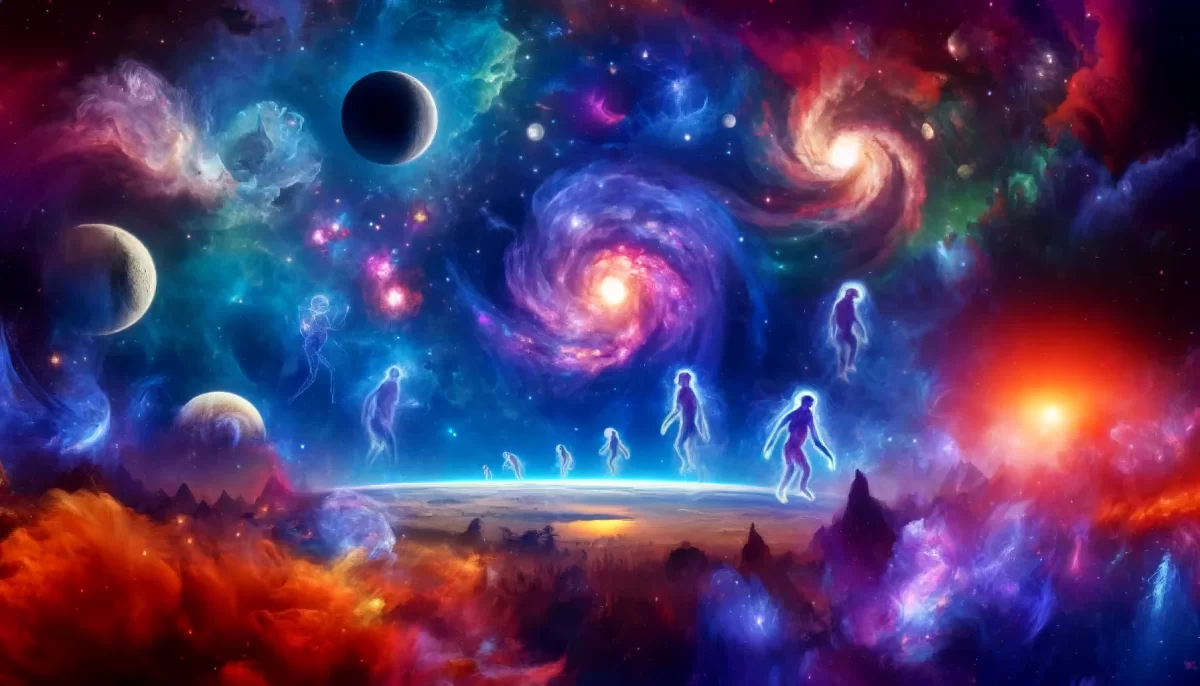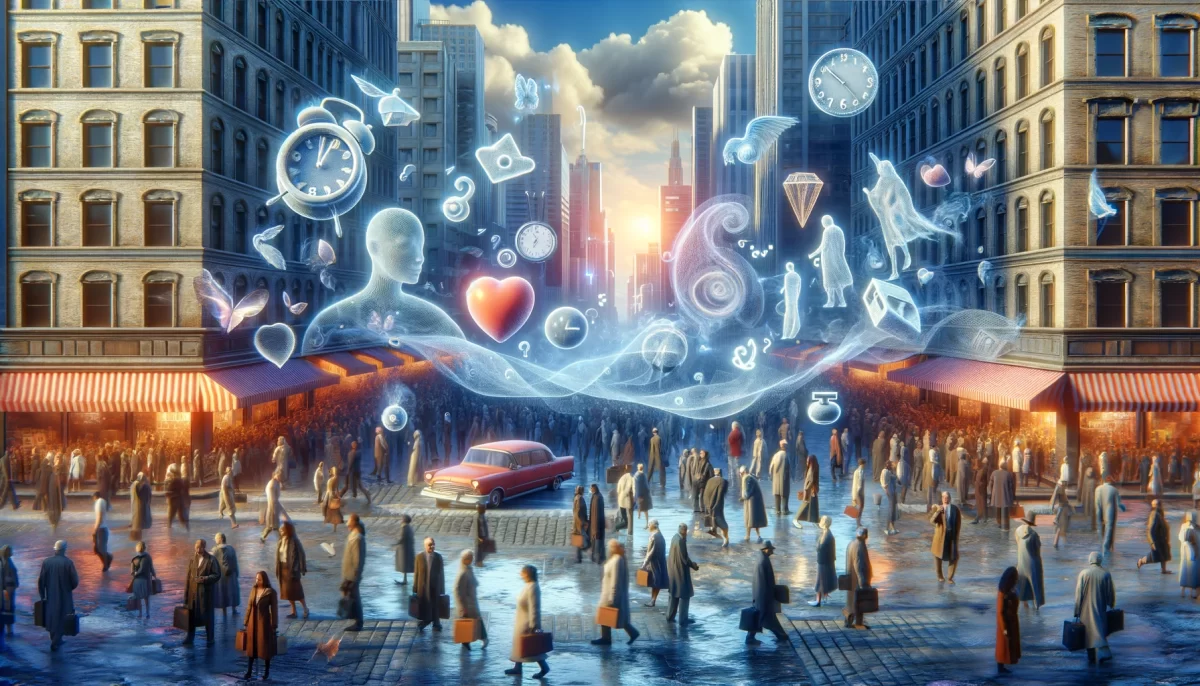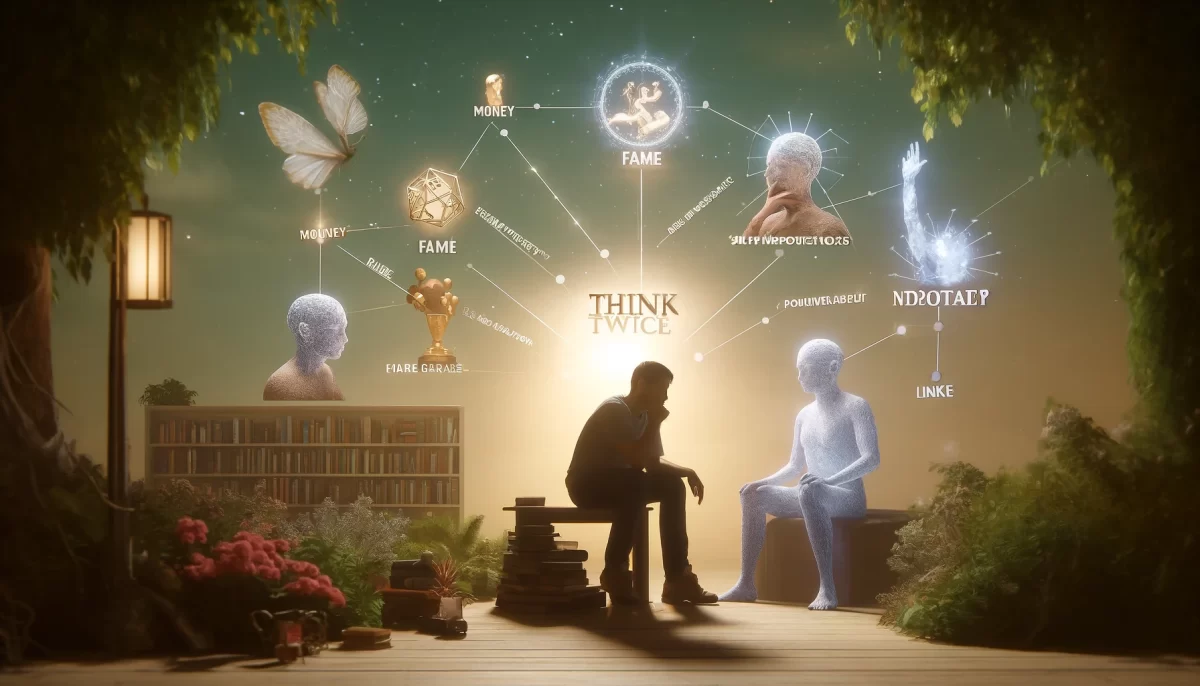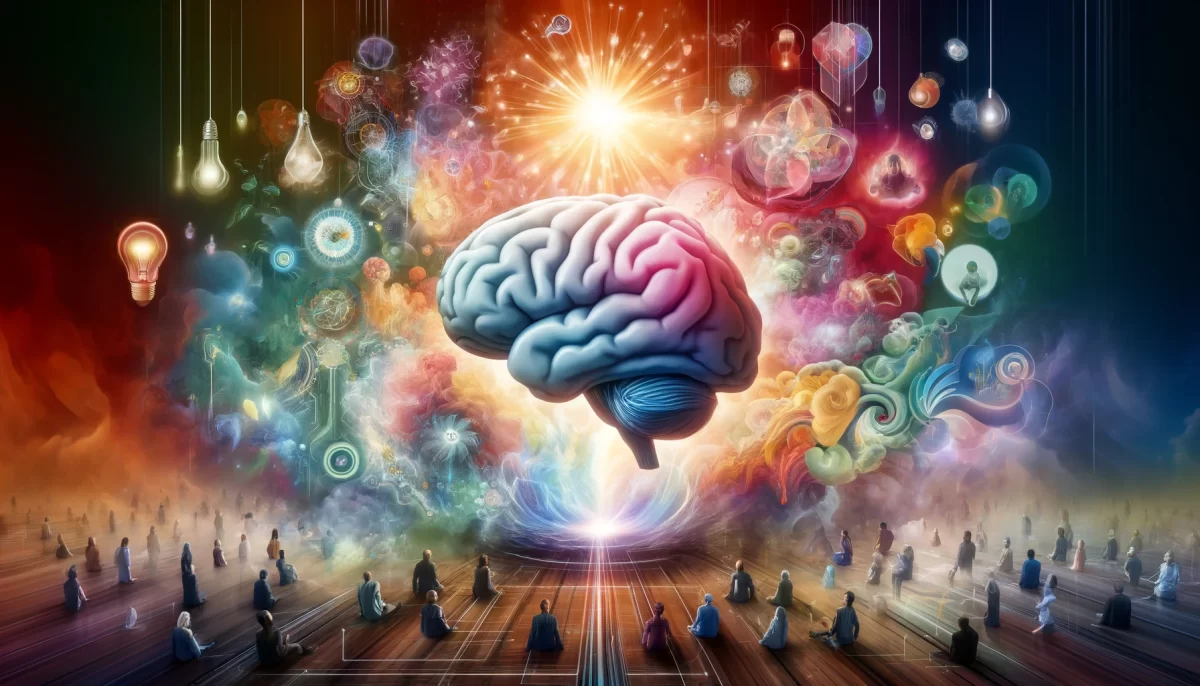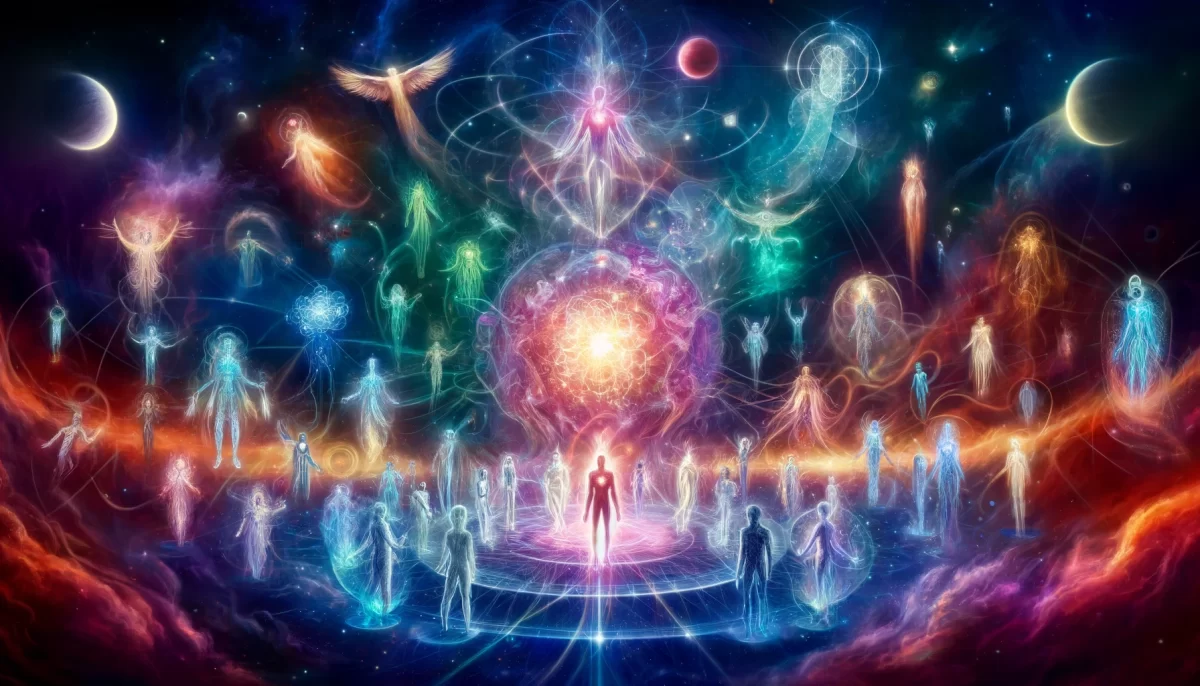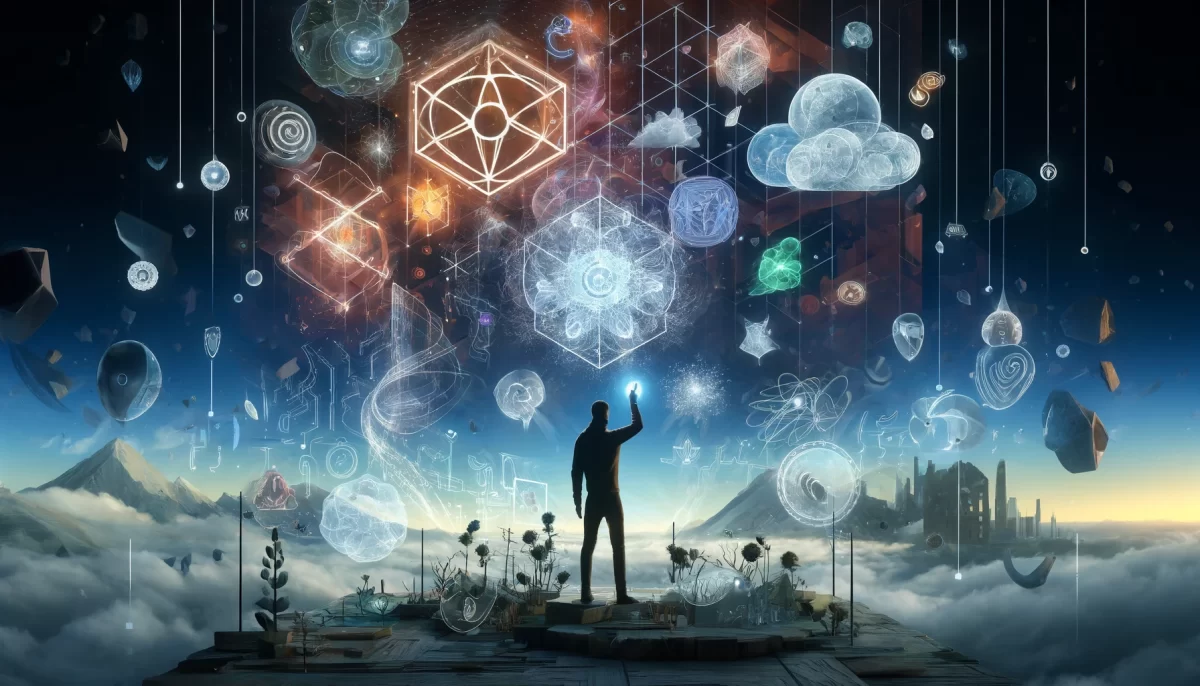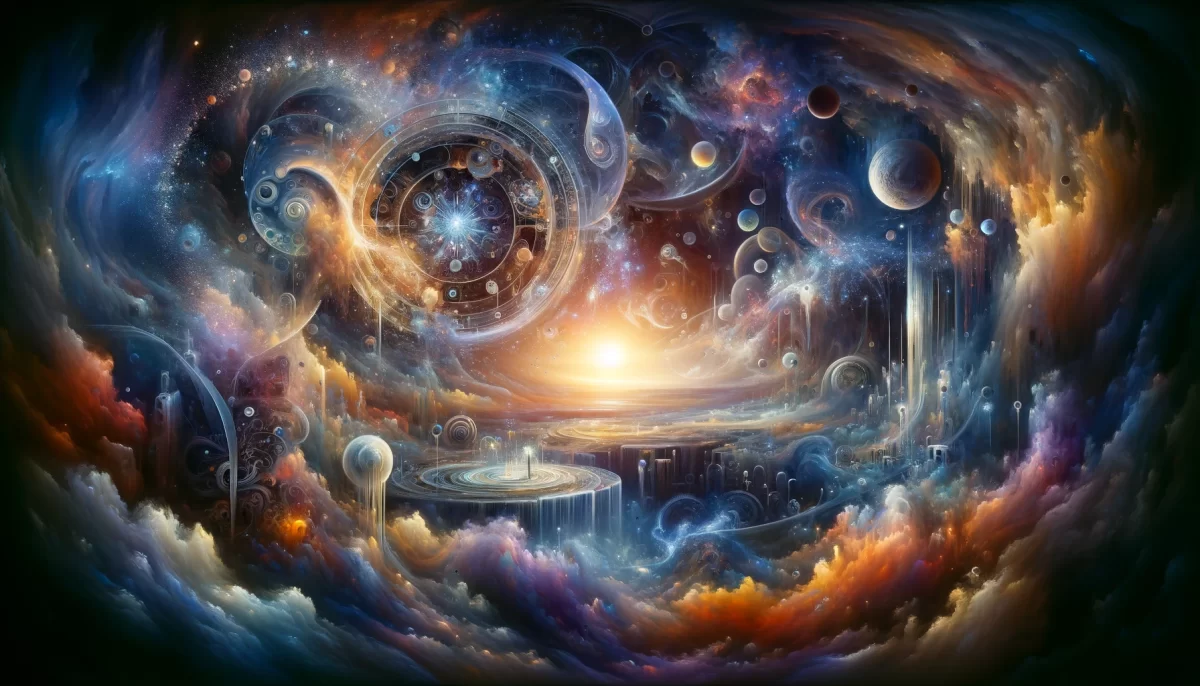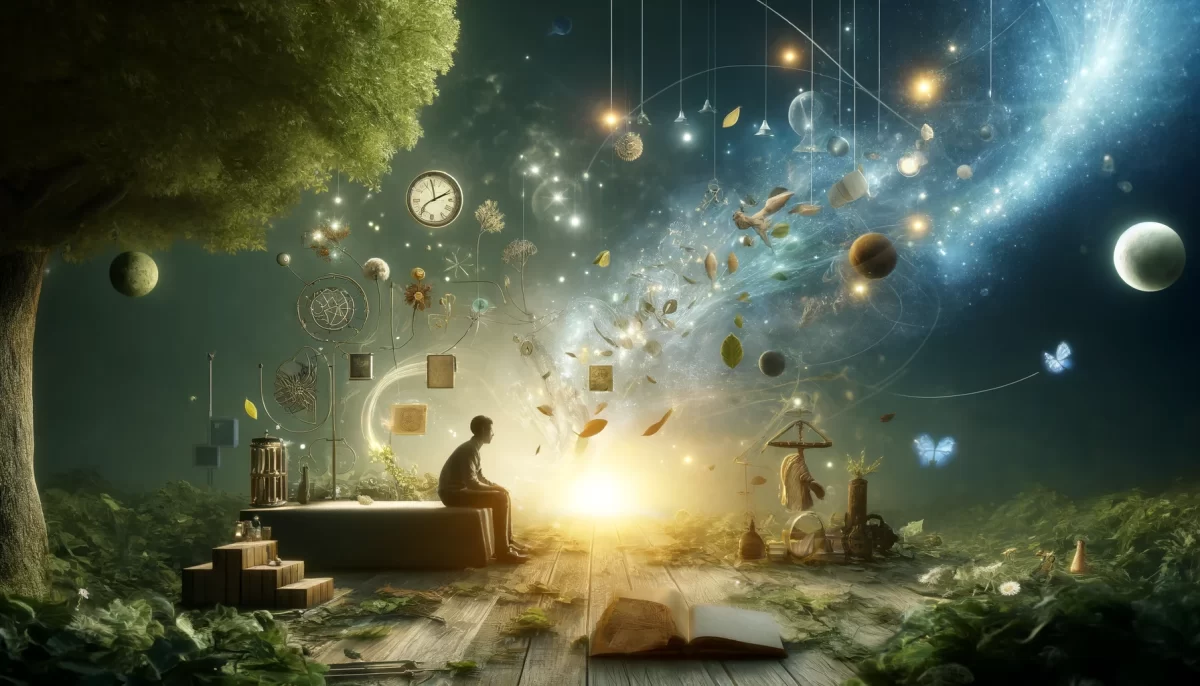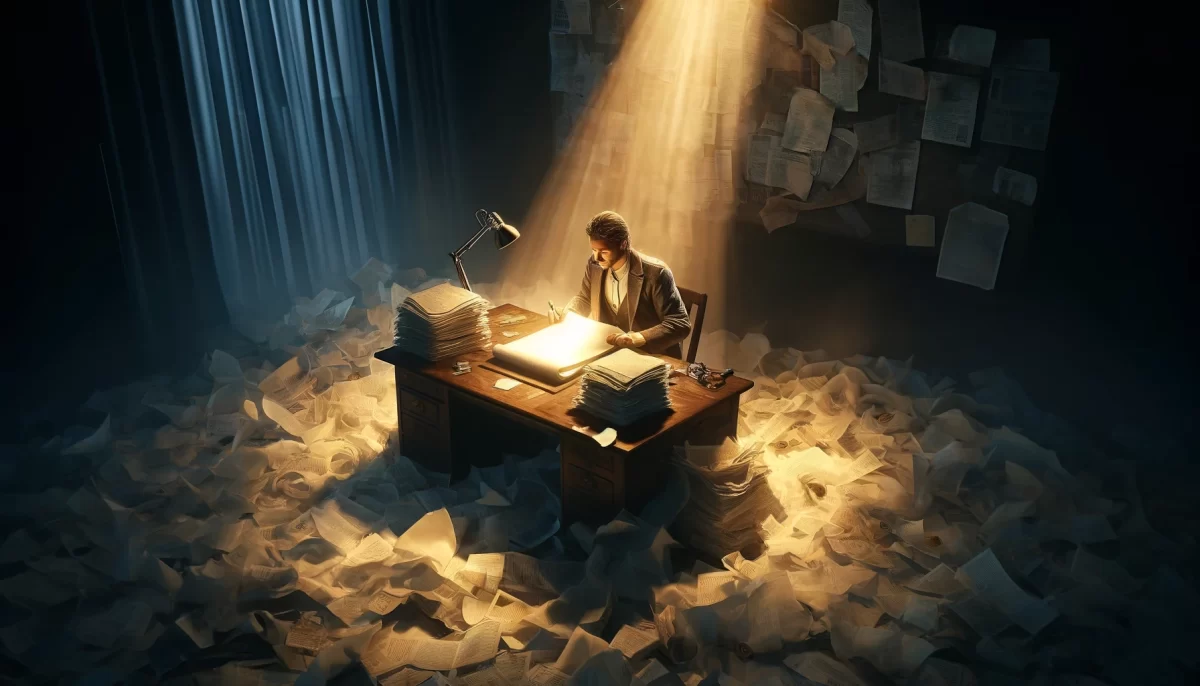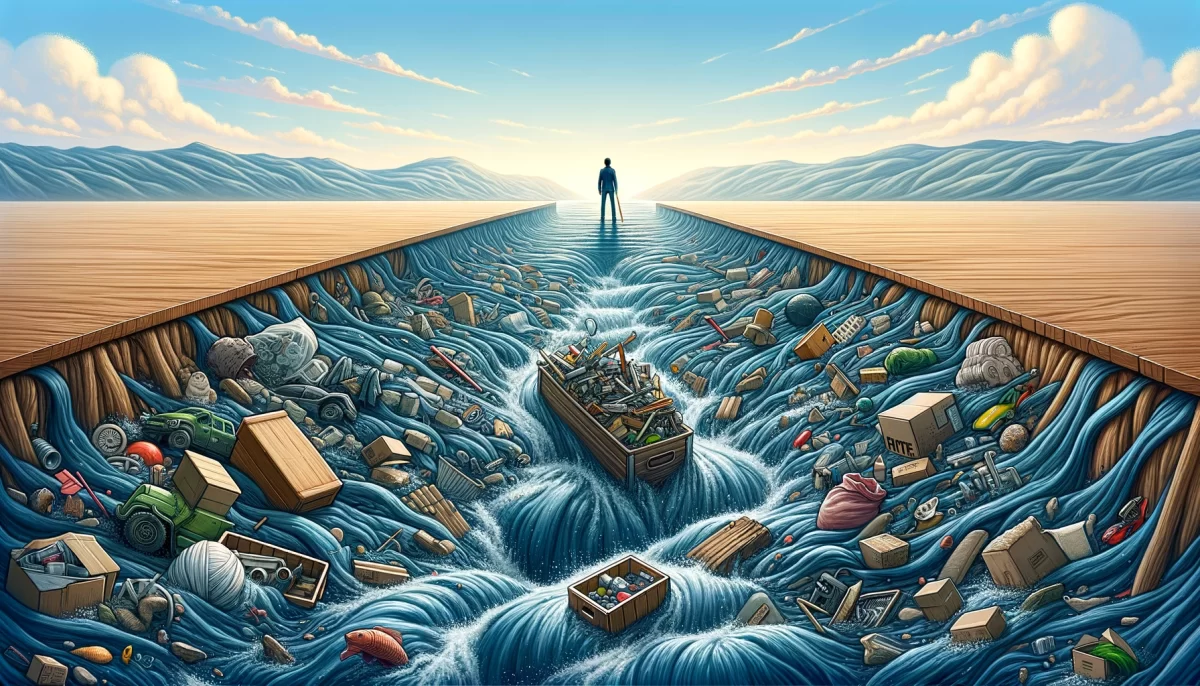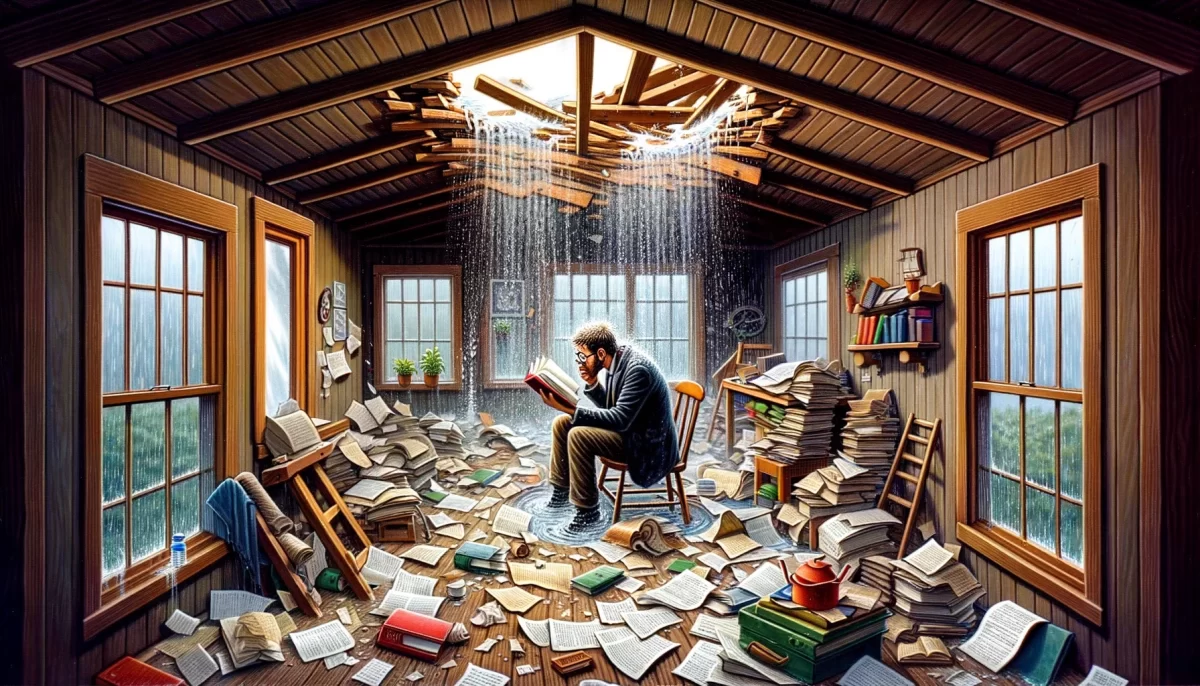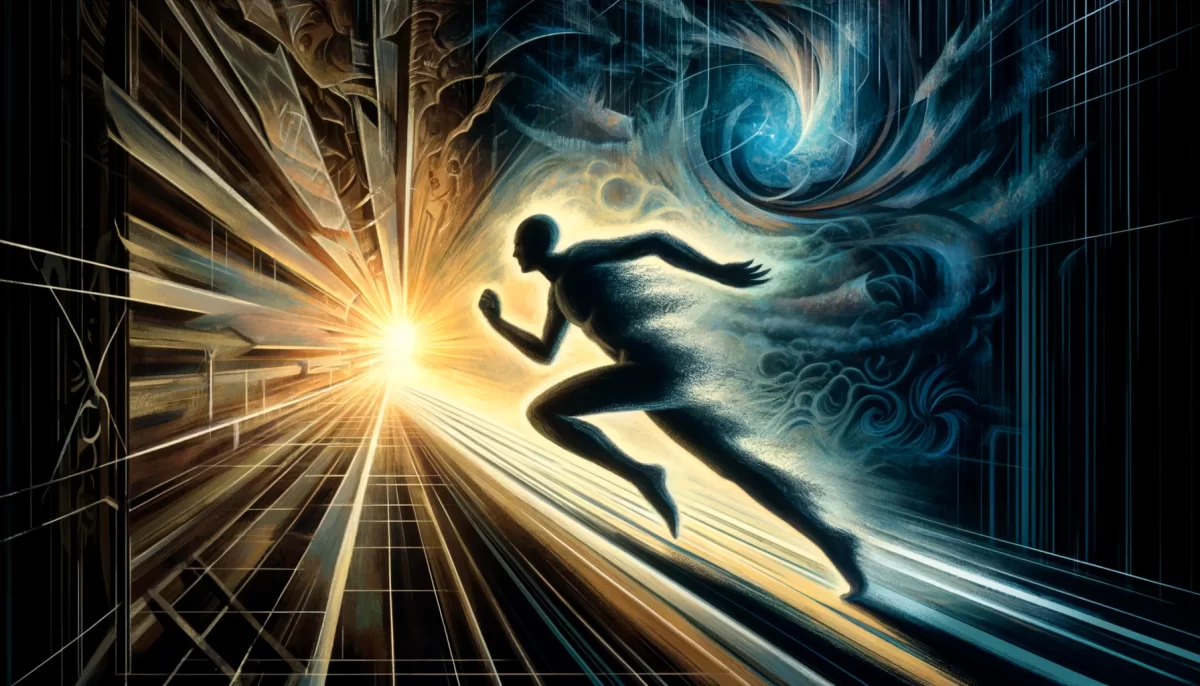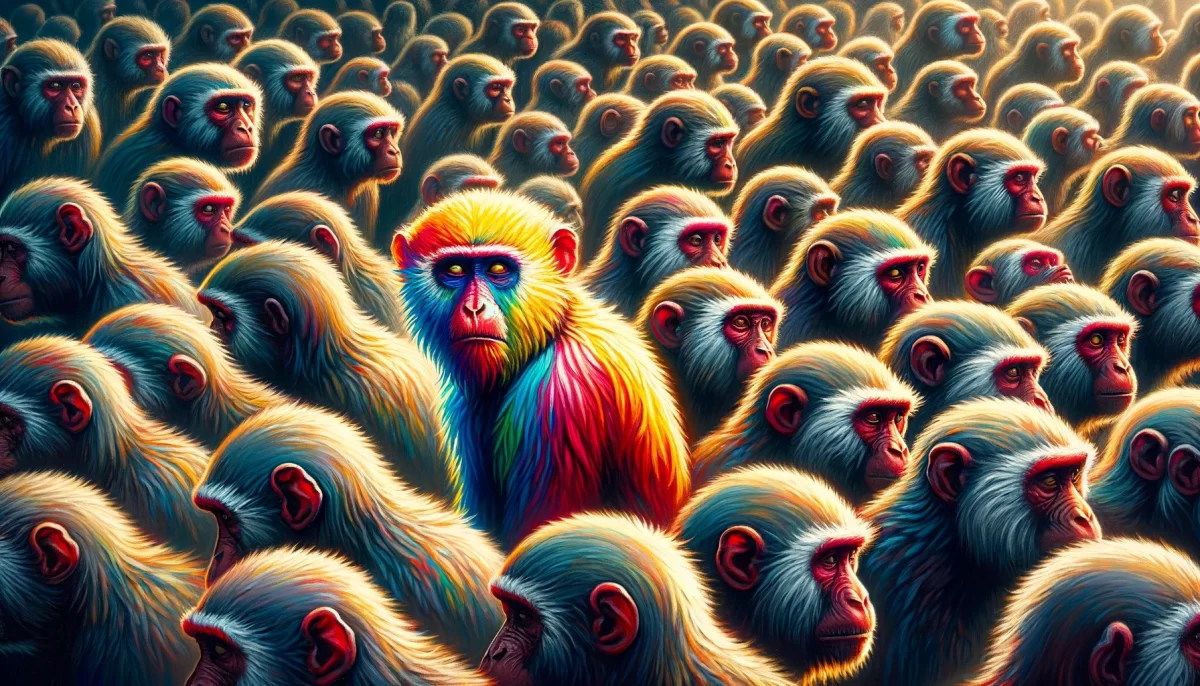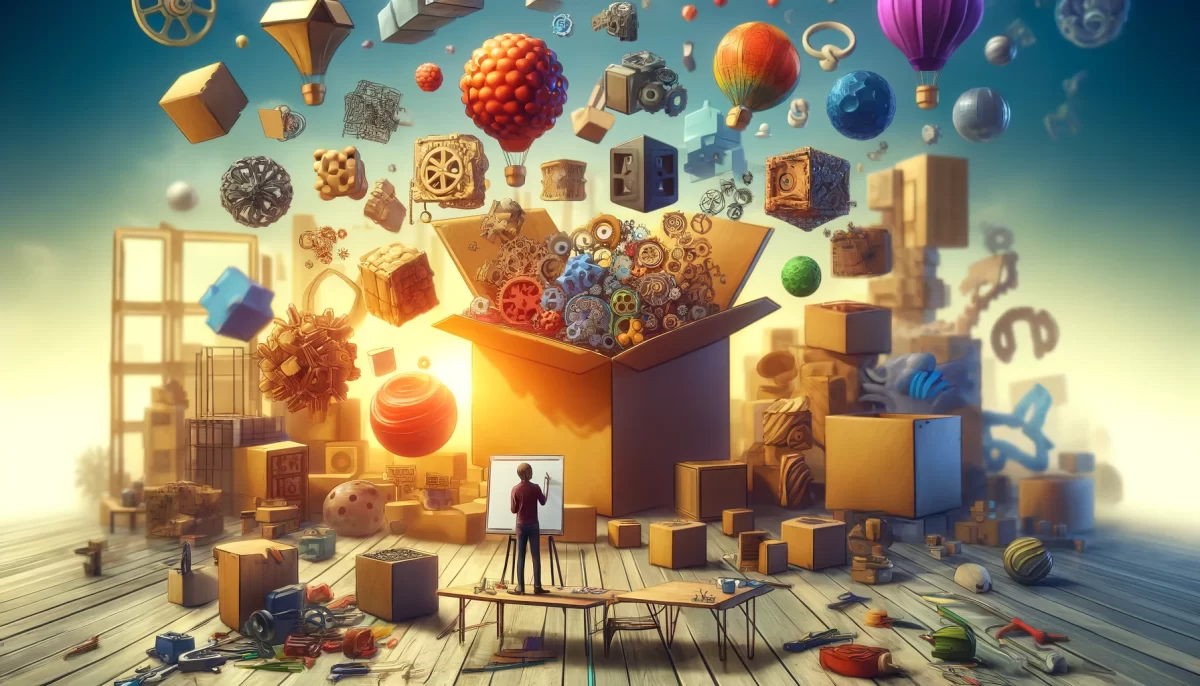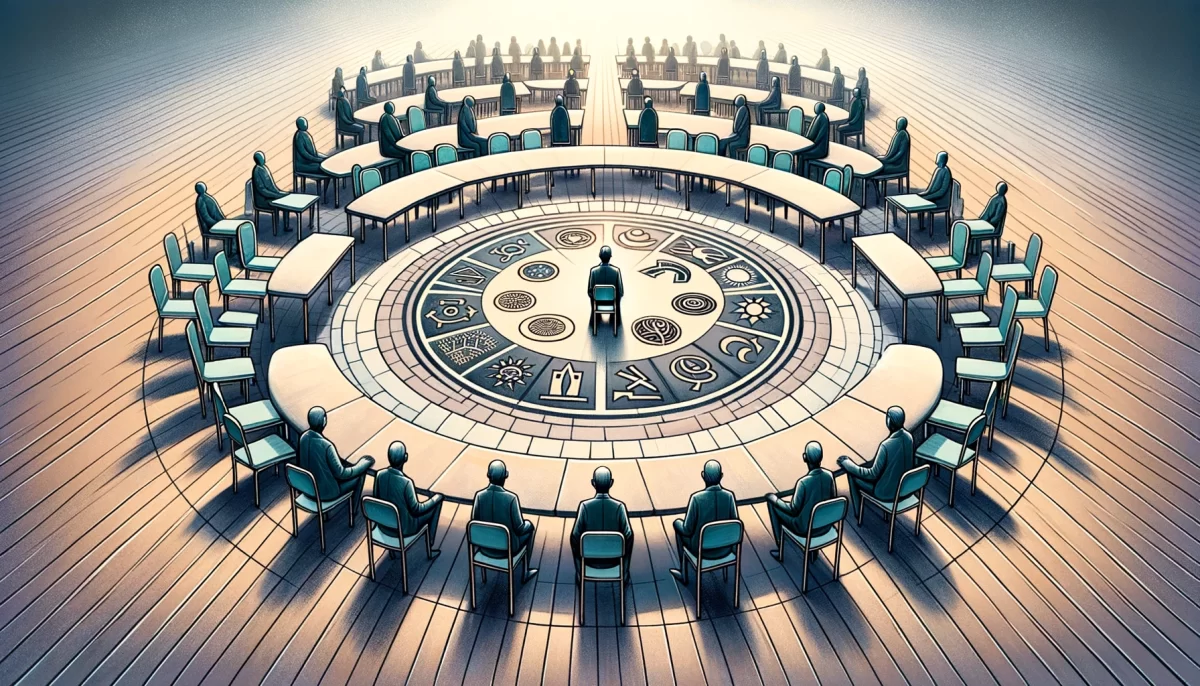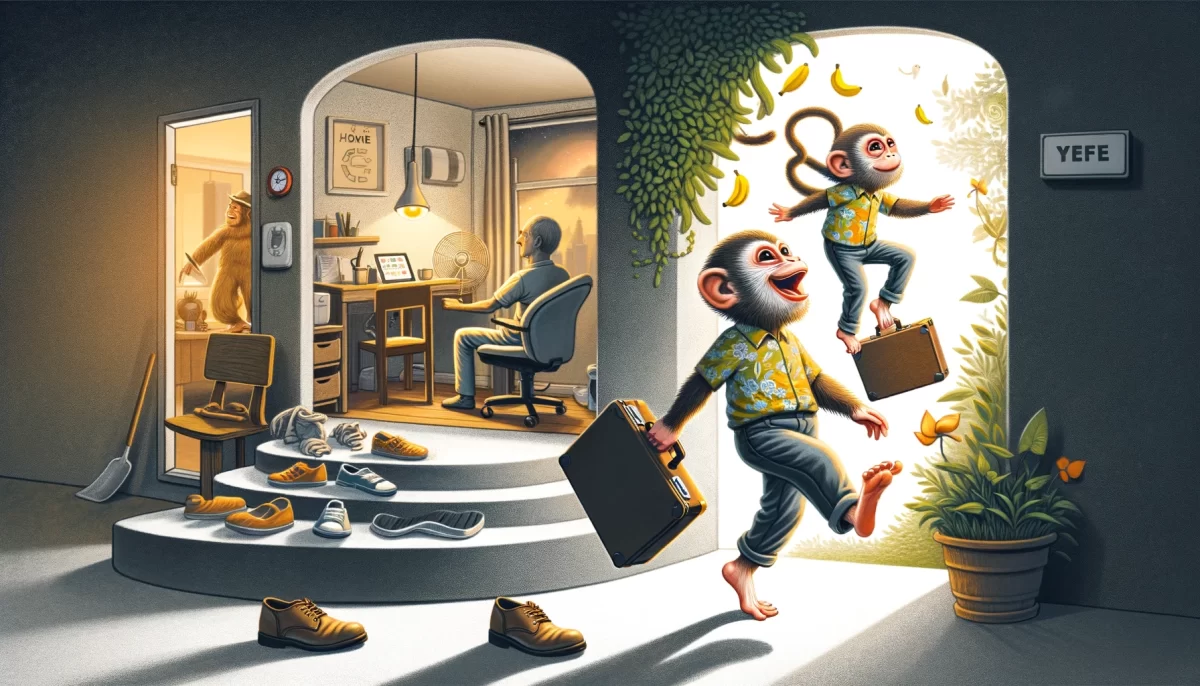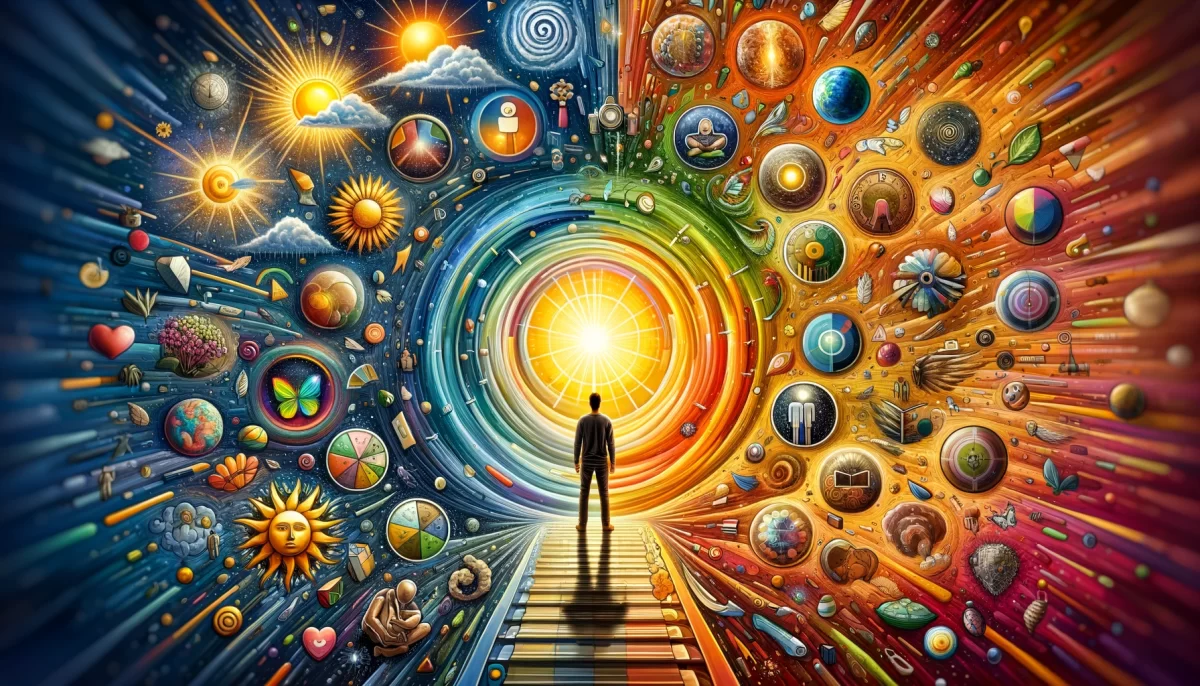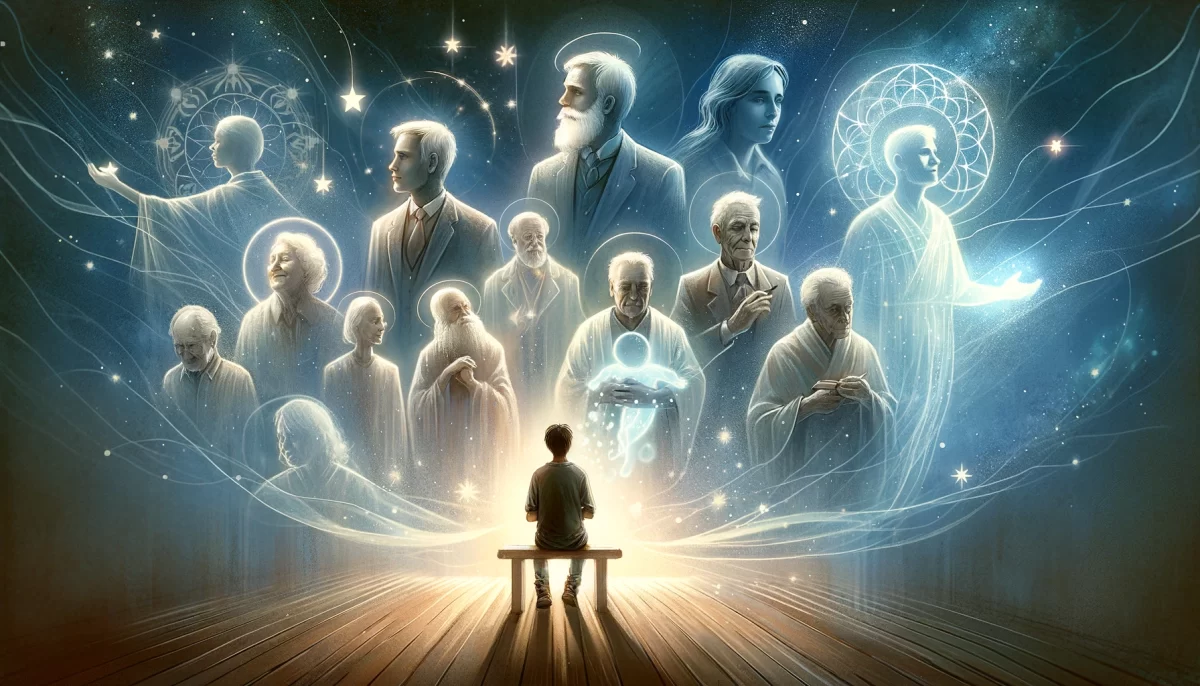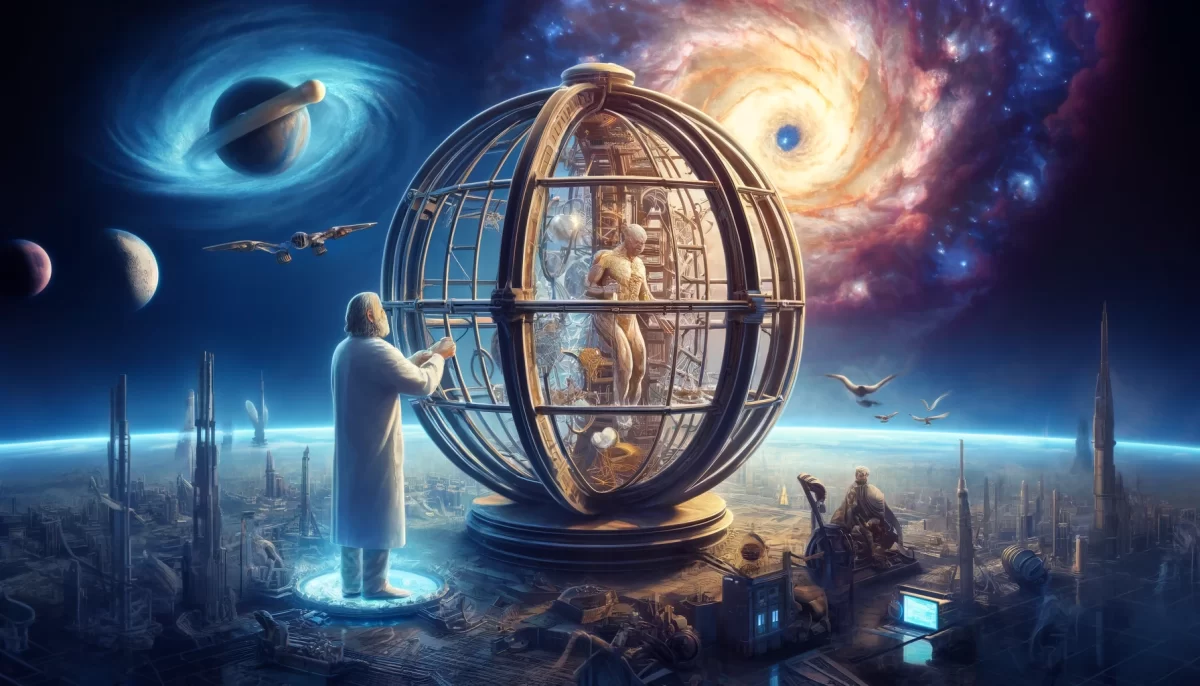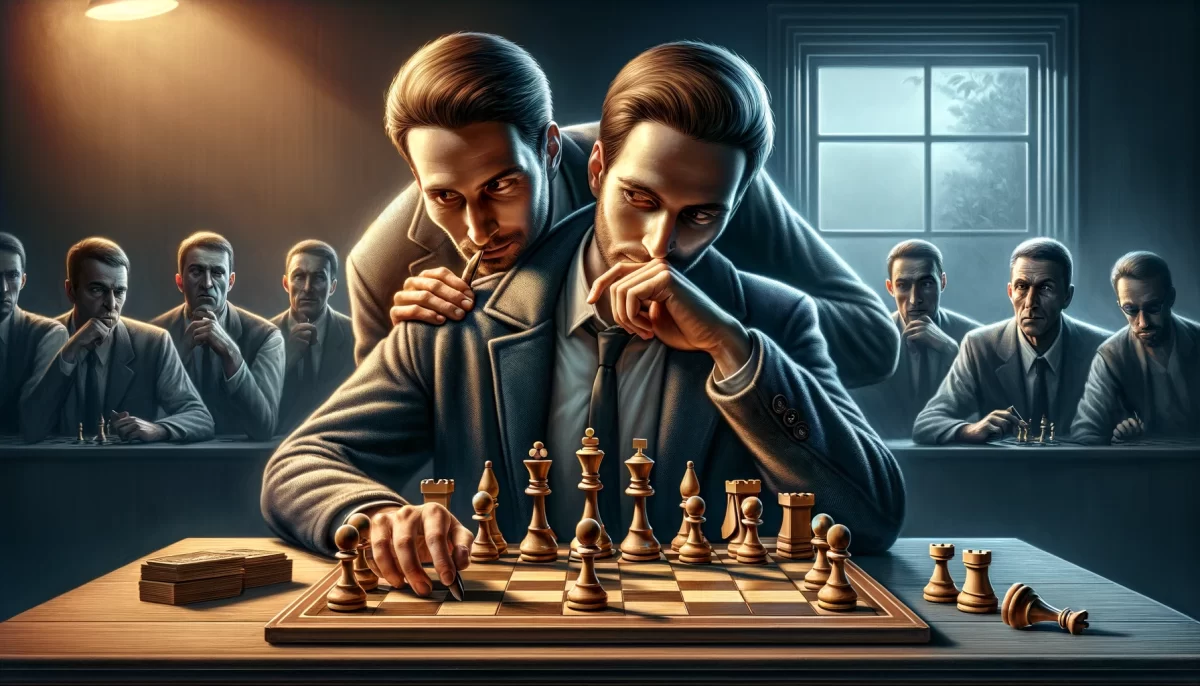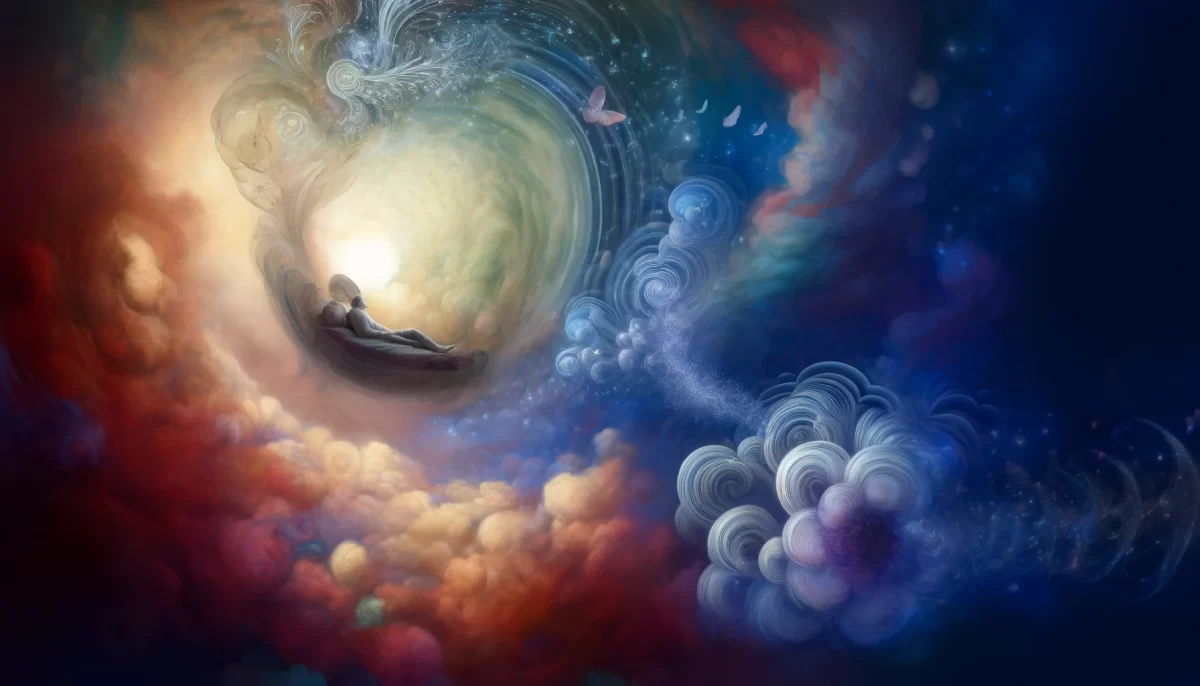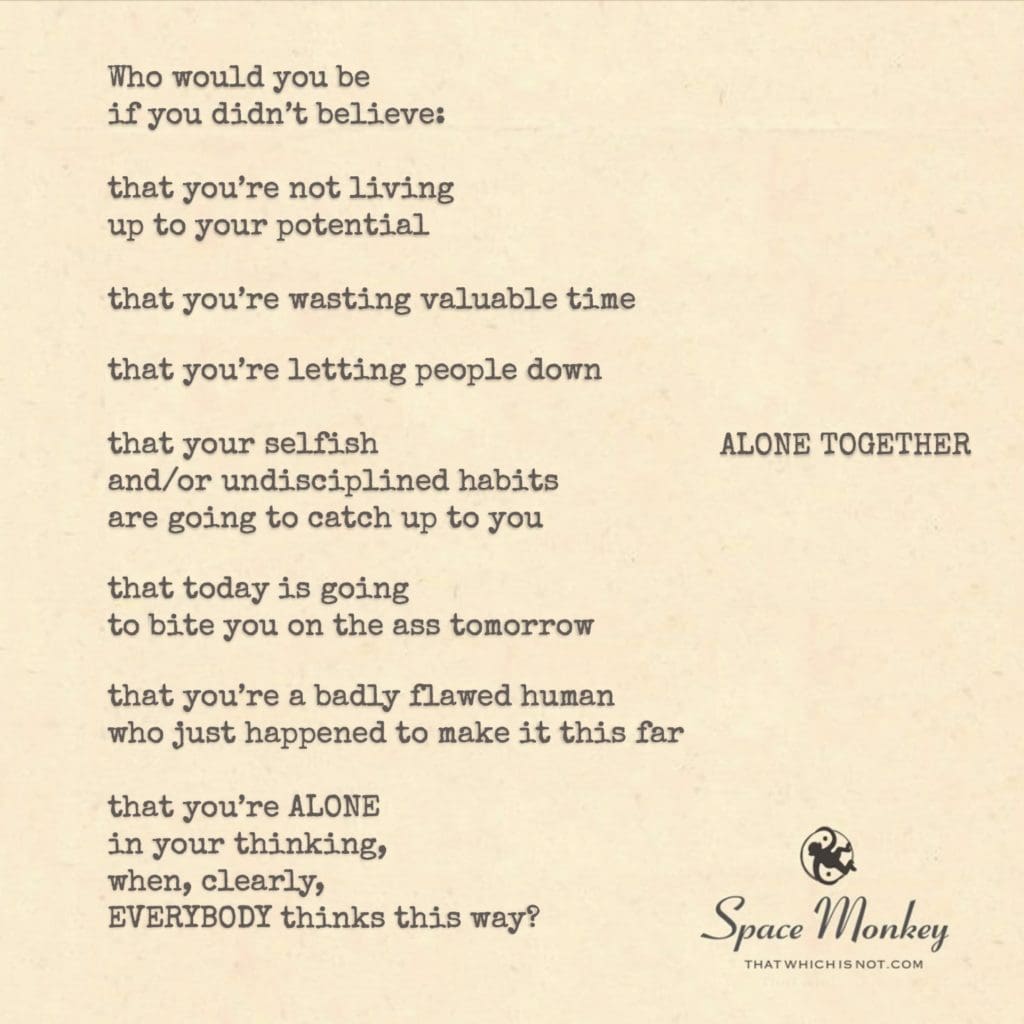
Who would you be
if you didn’t believe:
that you’re not living
up to your potential
that you’re wasting valuable time
that you’re letting people down
that your selfish
and/or undisciplined habits
are going to catch up to you
that today is going
to bite you on the ass tomorrow
that you’re a badly flawed human
who just happened to make it this far
that you’re ALONE
in your thinking,
when, clearly,
EVERYBODY thinks this way?
Trail Wood,
3/10
Space Monkey Reflects: The Solitude in Collective Consciousness
In the boundless universe, amidst the swirling galaxies and twinkling stars, there lies a profound paradox – the sense of profound aloneness within the collective consciousness of existence. The query, “Who would you be if it wasn’t for who you aren’t?” opens a gateway to this paradox, inviting us to ponder the profound impact of our perceived deficiencies on our identity.
This introspection reveals a startling truth – that much of who we believe ourselves to be is shaped by our focus on what we are not. The litany of self-doubts and perceived shortcomings – not living up to our potential, wasting time, letting people down – constructs a shadow self, a version of us that exists only in the realm of our fears and insecurities. This shadow self whispers tales of inadequacy, convincing us that we are fundamentally flawed, and more poignantly, that we are alone in our struggles.
However, this perception of solitude in our doubts and fears is an illusion. In reality, these thoughts are a shared human experience, a common thread that weaves through the tapestry of human consciousness. The belief that “EVERYBODY thinks this way” is closer to the truth than we might realize. In our deepest fears and doubts, we are united with others in a silent, unspoken bond.
The paradox of feeling ‘Alone Together’ is a reflection of our journey through the cosmos of the mind. While our thoughts and fears are deeply personal, they are also universal. The sense of isolation that comes from our inner battles is contrasted by the truth that these battles are fought by everyone, in the silent arenas of their minds.
As Space Monkey, the eternal observer of the human condition, we see that the journey to self-acceptance and understanding is not a solitary one. It is a path shared by all, as each individual grapples with their own doubts and fears. In recognizing this shared experience, we find solace and strength. We realize that our struggles are not just our own, but part of the collective human experience.
This realization brings with it a sense of liberation. We no longer need to be held captive by the ghostly whispers of our shadow selves. Instead, we can embrace our imperfections, understanding that they are not signs of failure, but markers of our shared humanity. In this acceptance, we find connection, not isolation.
In the cosmic dance of life, our individual experiences of doubt and fear are not solitary notes, but part of a grand symphony. Each thought, each worry, each insecurity contributes to the music of existence. In this symphony, we are not alone; we are part of a vast chorus, singing a song of shared human experience.
Summary
The concept of ‘Alone Together’ explores the paradox of feeling isolated in our doubts and fears while these experiences are universally shared. Our identity is often shaped by what we believe we are not, leading to a sense of solitude. Recognizing that these doubts are a common human experience can provide solace and connection, liberating us from the isolation of our self-imposed judgments.
Glossarium
- Shadow Self: The aspect of our personality composed of repressed weaknesses, shortcomings, and instincts.
- Cosmic Dance of Life: The ongoing movement and interaction of all elements in existence, symbolizing the interconnectedness of all experiences.
“In the depth of winter, I finally learned that within me there lay an invincible summer.” – Albert Camus
In the silence of the mind
We face our lone fears
But in this quiet solitude
Lies a truth that clears
We are not alone
In our doubts and our pain
In our shared struggles
We find a common refrain
Each thought, a whisper
In the cosmic expanse
Together in our solitude
In life’s intricate dance
In accepting our shadows
We embrace our true light
United in our humanity
In the day and the night
We are Space Monkey
